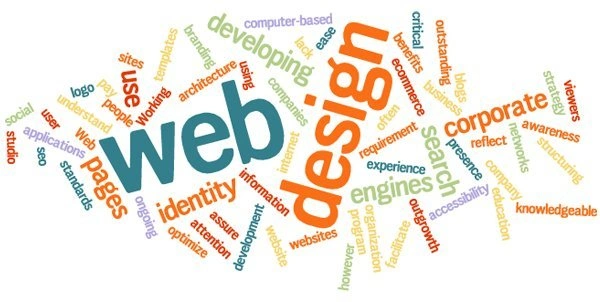The Importance of User Experience in Efficient Web Design Methods
User experience (UX) serves as a foundation in reliable web design approaches. It forms just how individuals communicate with a site, affecting their satisfaction and chance of returning. A well-designed UX can enhance interaction through intuitive navigating and responsive formats. Nonetheless, ignoring these elements might lead to frustration and raised bounce prices. Understanding the ins and outs of UX is crucial for designers intending to create engaging electronic experiences that resonate with varied target markets. What elements absolutely drive effective user involvement?
Recognizing User Experience and Its Influence On Style
User experience (UX) is frequently regarded as a mere facet of web design, it essentially shapes just how customers connect with an internet site. UX includes all facets of the user's interaction, including usability, ease of access, and general contentment. A favorable UX fosters involvement, encouraging individuals to explore the site and return in the future. Alternatively, an adverse experience can cause irritation, causing high bounce rates and shed chances for conversion.
Design aspects like web content, layout, and navigating organization play important functions in shaping this experience. Effective UX layout expects user needs and choices, making sure that info is aesthetically enticing and quickly obtainable. Additionally, understanding user behavior through analytics can give valuable understandings, educating style decisions that boost use. Ultimately, an extensive understanding of UX allows developers to create web sites that not only bring in individuals however likewise advertise significant interactions that line up with company objectives and user expectations.
Trick Concepts of Efficient User Experience
Effective user experience depends upon several vital principles that improve internet site capability and engagement. Instinctive navigation design, responsive format essentials, and the relevance of aesthetic hierarchy are essential aspects that add to a seamless communication between individuals and web content. Understanding these principles enables designers to develop even more easily accessible and easy to use digital settings.
User-friendly Navigation Style
User-friendly navigation design offers as a crucial entrance to their total experience when users come across a web site. Efficient navigation permits users to effortlessly find the details they seek, enhancing their communication with the website. Trick concepts consist of clear labeling, logical company, and constant placement of navigation aspects. Labels need to be straightforward, allowing customers to anticipate the material they will locate. A well-structured pecking order helps customers understand the partnership between different sections, guiding them through the internet site flawlessly. Furthermore, receptive menus and conveniently accessible links add to a liquid experience throughout gadgets. By focusing on instinctive navigating, developers can significantly decrease user frustration and boost engagement, eventually fostering a favorable assumption of the web site and its web content.
Responsive Design Fundamentals
A well-structured navigating system naturally leads to the need for a receptive format, which is crucial in today's varied digital landscape. A responsive design guarantees that websites function seamlessly throughout numerous gadgets, including desktops, tablet computers, and smartphones. This versatility improves user experience by permitting web content to be easily available and aesthetically meaningful, despite screen dimension. Secret principles of receptive layout include liquid grids, versatile images, and media questions, which assist in perfect viewing. Additionally, prioritizing touch-friendly aspects improves communication on mobile phones. By executing a receptive format, designers can accommodate customers' needs, lessen bounce rates, and boost engagement. Eventually, a well-executed receptive design cultivates a positive user experience, motivating site visitors to discover the site even more.
Aesthetic Power Structure Value
Aesthetic hierarchy plays an important function in assisting customers via a website, ensuring that important information catches their interest. By purposefully making use of dimension, spacing, contrast, and shade, developers can produce a clear pathway for individuals to follow. Bigger elements usually attract the eye, suggesting their importance, while contrasting colors can highlight contact us to activity. Furthermore, constant positioning and collection of associated web content enhance understanding, making navigating intuitive. Effective usage of visual hierarchy not just improves functionality but also supports the general aesthetic of the site, fostering a positive user experience. When users can conveniently recognize the most crucial info, they are much more most likely to engage with the material, bring about raised contentment and interaction with the web site.
The Duty of Functionality in Web Design
Functionality plays a necessary role in web design, specifically via navigation simplicity and adherence to ease of access standards. Effective navigating enhances user fulfillment by permitting site visitors to find info rapidly and without effort. Meeting availability criteria ensures that all individuals, no matter of their abilities, can efficiently communicate with the internet site.
Navigation Simplicity
Simplicity in navigation stands as a keystone of reliable web design, substantially influencing user experience. A streamlined navigation system allows users to locate info rapidly and with ease, reducing disappointment and enhancing complete satisfaction. Clear labeling and rational framework are crucial elements, leading individuals effortlessly with the site. Repetitive links or overly complicated food selections can disorient customers, resulting in boosted bounce rates. Additionally, mobile responsiveness should be considered, guaranteeing navigating remains simple throughout tools. Prioritizing crucial web pages and lessening mess further supports user engagement. Effective navigation not only fosters a positive experience but additionally encourages customers to discover the website more thoroughly, ultimately leading to higher conversion rates. In this respect, navigating simpleness functions as a crucial element in the total efficiency of web design approaches.
Availability Specifications
User engagement is greatly improved when sites follow access criteria, guaranteeing that all individuals, no matter their abilities, can browse and engage effectively. Conformity with these requirements not only broadens the audience but likewise improves total user contentment. Accessible design includes functions such as message choices for photos, keyboard navigation, and sufficient color comparison, which help with use by people with handicaps. In enhancement, implementing these standards can favorably influence search engine optimization (SEO) by boosting site structure and quality. As web design progresses, focusing on ease of access comes to be crucial in cultivating a comprehensive digital setting. By embracing these requirements, designers add to a more equitable web, eventually driving user loyalty and interaction.
Significance of Responsive Design for User Involvement
As customers progressively accessibility internet sites via a range of devices, the importance of responsive style ends up being paramount for engaging users efficiently. Receptive style guarantees that a site adapts perfectly to different display dimensions, offering an ideal watching experience despite the tool utilized. This versatility improves user involvement by assisting in simpler navigation and interaction with web content.
When users encounter an internet site that is responsive, they are more probable to remain longer, discover even more, and return in the future. A properly designed responsive design lessens the stress frequently connected with scrolling and zooming on smaller displays, thereby reducing bounce prices. Additionally, responsive style can favorably influence search engine rankings, as online search engine prioritize have a peek at this site mobile-friendly sites. In today's electronic landscape, where mobile usage remains to climb, carrying out responsive design is not simply helpful, but important for keeping user engagement and assuring a positive experience across all gadgets.
Enhancing Load Times for Better User Complete Satisfaction

To improve load times, web designers must prioritize optimizing photos, leveraging browser caching, Full Report and minimizing HTTP demands. In addition, utilizing Web content Shipment Networks (CDNs) can accelerate content distribution by distributing it across numerous geographic places. Simplifying code, such as compressing CSS and JavaScript documents, even more adds to much faster loading rates.
Eventually, a commitment to boosting tons times not just improves user fulfillment however likewise strengthens brand name loyalty and boosts the probability of repeat check outs. A swift, smooth experience is crucial for maintaining customers and fostering favorable communications.
The Influence of Visual Hierarchy on User Communication
Visual pecking order offers as a crucial aspect in leading user interaction on an internet site. By organizing content in a method that prioritizes info visually, designers can affect just how users navigate and engage with a site. This power structure is established via numerous style strategies, including dimension, spacing, contrast, and color. Bigger fonts or strong colors draw interest to essential components, such as calls to action or headings, while suppressed colors and smaller fonts can indicate subservient details.
Efficient visual power structure assists users quickly identify what is essential, minimizing cognitive tons and improving functionality. It allows for instinctive navigating, making it much easier for customers to find what they require without irritation. As customers communicate with a site, a well-structured visual pecking order cultivates a much more rewarding experience, eventually resulting in greater engagement and conversion prices. Developers should focus on these principles to develop a efficient and user-centered web environment.
Determining User Experience: Tools and Methods

Frequently Asked Concerns
How Can I Improve My Web site's User Experience on a Budget?
To enhance a website's user experience on a spending plan, one can maximize page lots rate, simplify navigating, execute receptive style, boost material clarity, and collect user responses for top article continual refinements, guaranteeing a gratifying visitor experience.
What Are Typical User Experience Mistakes to Prevent in Web Design?
Typical user experience errors in web design include chaotic formats, poor navigating, slow packing times, lack of mobile responsiveness, overlooking availability, inconsistent branding, and stopping working to prioritize user responses - agency for web design. Each can substantially hinder overall site effectiveness
How Frequently Should I Update My Internet Site for Better User Experience?
Websites should be upgraded regularly, preferably every couple of months, to keep optimal user experience. Constant updates aid address functionality problems, revitalize content, and adjust to transforming user demands, making sure the website continues to be pertinent and interesting.

Can User Experience Influence Search Engine Optimization Rankings on My Web site?
User experience can considerably impact SEO rankings, as search engines prioritize internet sites that use smooth navigation, fast loading times, and interesting web content. A favorable user experience can bring about lower bounce rates and higher search presence.
What Duty Does Ease Of Access Play in User Experience Style?
Accessibility plays a necessary duty in user experience style by ensuring that all individuals, no matter abilities, can navigate and connect with a website efficiently. This inclusivity improves general fulfillment and involvement among varied individuals.
User experience (UX) is often regarded as a simple facet of internet layout, it essentially forms just how customers interact with a website. User involvement is substantially enhanced when web sites stick to access requirements, making sure that all users, regardless of their capacities, can navigate and communicate effectively. Determining user experience (UX) is vital for comprehending just how successfully a web site fulfills the requirements of its individuals. In addition, usability screening, where genuine customers browse the website while viewers keep in mind problems, uses direct comments on user experience. Typical user experience errors in web style consist of cluttered formats, inadequate navigation, sluggish loading times, absence of mobile responsiveness, overlooking ease of access, irregular branding, and failing to prioritize user comments.